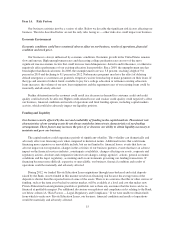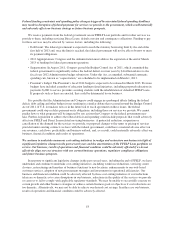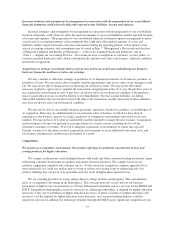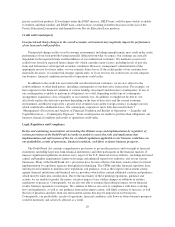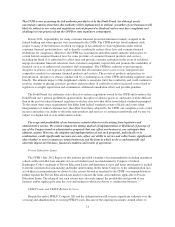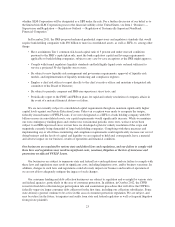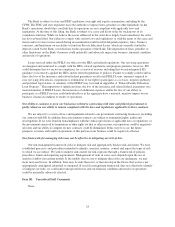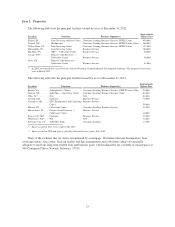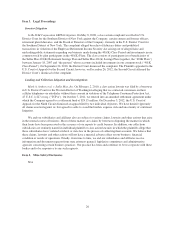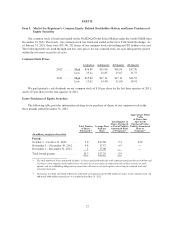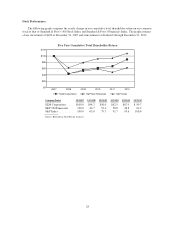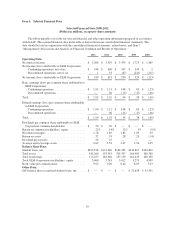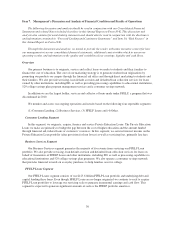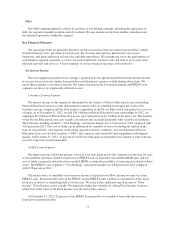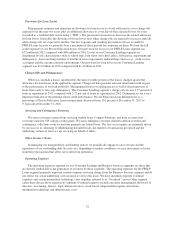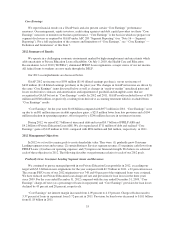Sallie Mae 2012 Annual Report Download - page 26
Download and view the complete annual report
Please find page 26 of the 2012 Sallie Mae annual report below. You can navigate through the pages in the report by either clicking on the pages listed below, or by using the keyword search tool below to find specific information within the annual report.The Bank is subject to state and FDIC regulation, oversight and regular examination, including by the
CFPB. The FDIC and state regulators have the authority to impose fines, penalties or other limitations on the
Bank’s operations should they conclude that its operations are not compliant with applicable laws and
regulations. At the time of this filing, the Bank is subject to a cease and desist order for weaknesses in its
compliance function. While we believe the issues addressed in the order have largely been remediated, the order
has not yet been lifted. Our failure to comply with various laws and regulations or with the terms of the cease and
desist order or to have issues raised during an examination could result in litigation expenses, fines, business
sanctions, and limitations on our ability to fund our Private Education Loans, which are currently funded by
deposits raised by the Bank, or restrictions on the operations of the Bank. The imposition of fines, penalties or
other limitations on the Bank’s business could materially and adversely impact our business, financial condition
and results of operations.
Loans serviced under the FFELP are subject to the HEA and related regulations. Our servicing operations
are designed and monitored to comply with the HEA, related regulations and program guidance; however, ED
could determine that we are not in compliance for a variety of reasons, including that we misinterpreted ED
guidance or incorrectly applied the HEA and its related regulations or policies. Failure to comply could result in
fines, the loss of the insurance and related federal guarantees on affected FFELP Loans, expenses required to
cure servicing deficiencies, suspension or termination of our right to participate as a servicer, negative publicity
and potential legal claims. A summary of the FFELP may be found in Appendix A “Federal Family Education
Loan Program.” The imposition of significant fines, the loss of the insurance and related federal guarantees on a
material number of FFELP Loans, the incurrence of additional expenses and/or the loss of our ability to
participate as a FFELP servicer could individually or in the aggregate have a material, negative impact on our
business, financial condition or results of operations.
Our ability to continue to grow our businesses related to contracting with state and federal governments is
partly reliant on our ability to remain compliant with the laws and regulations applicable to those contracts.
We are subject to a variety of laws and regulations related to our government contracting businesses, including
our contracts with ED. In addition, these government contracts are subject to termination rights, audits and
investigations. If we were found in noncompliance with the contract provisions or applicable laws or regulations, or
the government exercised its termination or other rights for that or other reasons, our reputation could be negatively
affected, and our ability to compete for new contracts could be diminished. If this were to occur, the future
prospects, revenues and results of operations of this portion of our business could be negatively affected.
Our framework for managing risks may not be effective in mitigating our risk of loss.
Our risk management framework seeks to mitigate risk and appropriately balance risk and return. We have
established processes and procedures intended to identify, measure, monitor, control and report the types of risk
to which we are subject. We seek to monitor and control our risk exposure through a framework of policies,
procedures, limits and reporting requirements. Management of risks in some cases depends upon the use of
analytical and/or forecasting models. If the models that we use to mitigate these risks are inadequate, we may
incur increased losses. In addition, there may be risks that exist, or that develop in the future, that we have not
appropriately anticipated, identified or mitigated. If our risk management framework does not effectively identify
or mitigate our risks, we could suffer unexpected losses and our financial condition and results of operations
could be materially adversely affected.
Item 1B. Unresolved Staff Comments
None.
24



